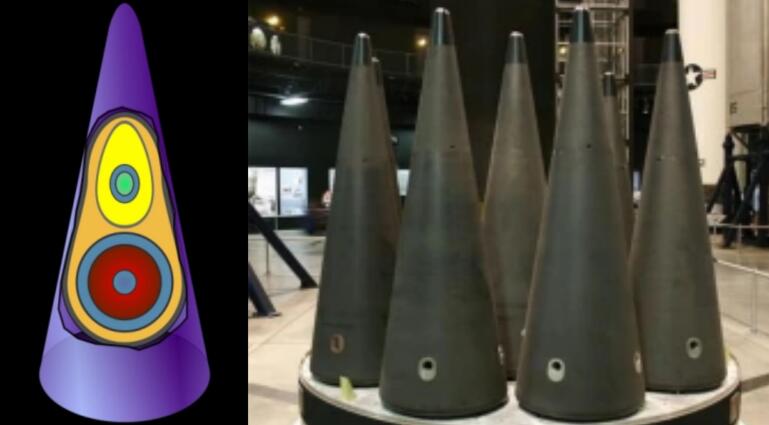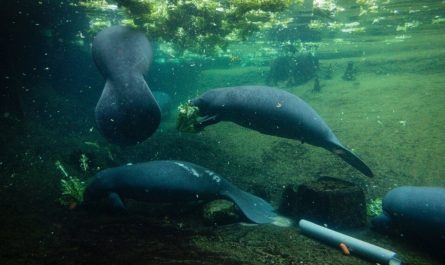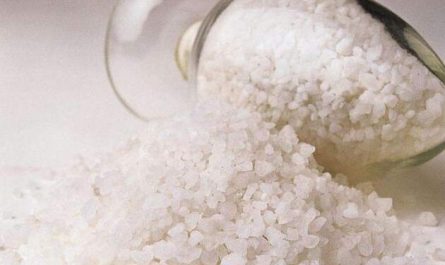First, let me talk about the general status of nuclear ownership in countries around the world.
At present, there are 9 nuclear countries in the world, namely, the United States, Russia, France, China, Britain, Pakistan, India, Israel, and North Korea. The number of nuclear weapons is roughly ranked above, from first to ninth. However, there are only five internationally recognized nuclear-holding countries, namely Russia, the United States, France, China, and the United Kingdom. The nuclear-holding status of some other countries has not been recognized. Among them, India and Pakistan have declared that they have nuclear weapons and have not been recognized internationally; Israel is recognized as having nuclear weapons, but they have not recognized them; North Korea claims to have nuclear weapons.
According to Sweden’s Stockholm International Peace Research Institute (SIPRI), a yearbook is published every year, which includes the status of global nuclear power, which is a world-recognized authoritative data. In the yearbook released by them on June 15, 2020, the total global nuclear warhead stock released was 13,400, of which 3720 warheads have been deployed on duty. This deployed statistics only covers the four countries of the United States, Russia, Britain and France. Other countries probably have no public information, so there is no statistical data.
Among the total number of nuclear bombs owned, Russia is the leader, with a total of 6,375 nuclear warheads, of which 1,570 have been deployed; the United States is the second with a total of 5870 nuclear warheads, of which 1,750 have been deployed; France is the third with a total of 1,750 nuclear warheads. The number is 290 and 280 have been deployed; China is the fourth with a total of 320 nuclear warheads, and there is no deployed data; the fifth is the United Kingdom, with a total of 215 nuclear warheads, and 120 have been deployed.
The sixth to the ninth only have nuclear warheads, and there is no deployed data. They are Pakistan, with a total of 160 nuclear warheads; India, with a total of 150 nuclear warheads; Israel, with a total of 90 nuclear warheads; and North Korea, with a total of 30-40 nuclear warheads.
In recent years, as the United States and Russia have been negotiating to reduce nuclear weapons, the overall number of nuclear weapons possessed has shown a downward trend. According to relevant information, the United States had 31,255 nuclear warheads in 1967, which has dropped by more than 80% by 2020; Russia has not found relevant data, but we can compare the data in the 2011 SIPRI yearbook.
In 2011, there were 20,500 nuclear warheads in the world, of which the United States had 8,500 nuclear warheads and Russia had 11,000 nuclear warheads. By 2020, the world has decreased by about 35.6%, of which the United States has decreased by 31% and Russia has decreased by 42%. This data shows that the reduction in the number of nuclear weapons in recent years is mainly due to the United States and Russia. The number of other countries is not much, so the reduction is also very small, but nuclear tests are getting fewer and fewer (except North Korea).
But I think no matter how much it is reduced, it may only be a change in quantity, eliminating some of the early atomic bombs that had little effect. Those old and bulky nuclear fission weapons have no advantage except for a large maintenance cost. But what is left now is the hydrogen bomb that was developed later. It is small in size and powerful, and it is the essence.
Now we come to understand what types of nuclear bombs are available.
Nuclear bombs developed from atomic bombs to hydrogen bombs. The early development of nuclear bombs was the atomic bomb. Later, after the advent of the hydrogen bomb, the atomic bomb gradually withdrew from the stage of history. Atomic bombs and hydrogen bombs are both nuclear weapons, because they are all energy obtained through nuclear reactions. Atomic bombs are nuclear fission weapons, and hydrogen bombs are nuclear fusion weapons. Although they are all nuclear reactions, their principles are completely different.
Atomic bomb:
The principle of the atomic bomb is to use heavy elements, mainly uranium 235 and plutonium 239 as raw materials. Through neutron impact, large atomic nuclei are split into relatively small atomic nuclei, forming a chain reaction and exploding huge energy.
How big is this energy? It is in the chain reaction process of fission. After a large nucleus such as uranium 235 or plutonium 239 splits into two relatively small nuclei, the mass will be a little bit less, about 0.09% less, that is, 1 kg of pure nuclear fuel is completely reacted. There will be a loss of 0.9 grams. Where did the lost quality go? It is converted into energy and radiated away. This is the source of the power of a nuclear explosion.
How big is this energy? It is calculated using the mass-energy equation of Einstein, the originator of modern science. The expression of the mass-energy equation is: E=MC^2, where E is energy, in J (joule), M is mass, in kg (kilogram); C is the speed of light, in m/s (meters per second).
According to Einstein’s mass-energy equation, for every kilogram of 100% uranium-235 or plutonium-239 in nuclear fission, the energy of 0.0009*(300000000)^2 can be obtained, which is 81 trillion J. The explosive equivalent of each ton of explosives is 4184000000J, so the energy obtained by the fission reaction of 1kg of uranium-235 is equivalent to the explosive power of 19,000 tons of explosives.
The purity of atomic bomb fission materials is difficult to reach 100%, and due to problems such as reaction conditions, it is also difficult to complete 100% of the reaction and explode, so its explosive power cannot perfectly achieve all mass-energy conversion. The explosive power of Hiroshima atomic bomb uranium-235 reached 10kg, and the explosive power reached about 13,000 tons of TNT equivalent. It has not yet reached the explosive power of 7% pure uranium. Even so, the power is already amazing.
hydrogen bomb:
The hydrogen bomb belongs to the energy obtained by the nuclear fusion reaction, which is the aggregation of two or more light nuclei into a heavier nucleus. During this reaction process, a part of the mass will also be lost, and the loss is much larger than that of nuclear fission, reaching 0.7%, which is about 7.8 times that of nuclear fission. Therefore, according to the calculation of the mass-energy equation, the energy released by nuclear fusion is also 7.8 times larger than that of nuclear fission.
At present, the main fusion materials of hydrogen bombs are hydrogen isotopes deuterium and tritium, and lithium isotope lithium 6. This is the lightest element in the periodic table. Compared with atomic bombs, the advantages of hydrogen bombs mainly include: 1. It is more powerful and has lower killing cost per unit area; 2. Hydrogen and lithium, the main materials for fusion, are widely present in nature, and have more reserves than uranium and plutonium; 3. After the explosion of hydrogen bombs The environmental pollution is much smaller than that of the atomic bomb.
Because the charge of atomic bomb is limited by the critical point, that is, as long as the charge reaches a certain mass, it will produce fission reaction by itself, so the atomic bomb cannot be made very large. The only two atomic bombs used in actual combat in the world were both dropped in Japan. One was in Hiroshima, with an explosive power of about 13,000 tons of TNT equivalent; the other in Nagasaki, with an explosive power of about 20,000 tons of equivalent. The world’s largest atomic bomb is the Ivy League IVY developed by the United States, with an equivalent of only 500,000 tons; while the world’s largest hydrogen bomb is the Big Ivan manufactured by the former Soviet Union, with an equivalent of 50 million tons.
What is equivalent? According to the calculation of TNT high explosive, 1 ton equivalent is equivalent to the explosive power of 1 ton of TNT explosive. In theory, there is no upper limit to the equivalent weight of hydrogen bombs.
Dirty bomb:
The hydrogen bomb has never been pure hydrogen nuclear fusion, but a hybrid bomb of nuclear fission and nuclear fusion of the atomic bomb. This is because the conditions for the occurrence of nuclear fusion are very demanding, requiring high temperatures of tens of millions of degrees Celsius. Only the explosion of an atomic bomb can produce such a high temperature. In this way, when a hydrogen bomb is made, a small atomic bomb must be placed in it. The atomic bomb is first allowed to explode, and the high temperature and pressure obtained by the explosion are used to stimulate nuclear fusion.
This reaction process is a long story, but this is only a theoretical process, and it happens instantaneously during the actual explosion.
Therefore, if some people insist that only pure hydrogen nuclear fusion is called a hydrogen bomb, there has been no such hydrogen bomb from the beginning. All hydrogen bombs are a combination of atomic bombs and hydrogen bombs. This bomb is called a “two-phase bomb.” Later, in order to increase the power of the explosion, a layer of uranium-238 was wrapped around the hydrogen bomb. The explosion of the hydrogen bomb produced a large number of high-energy neutrons, which caused the uranium-238 in the shell to rapidly undergo a nuclear fission reaction, thereby releasing more energy. This kind of bomb can double the power of a nuclear bomb without adding a lot of cost.
The reaction process of this bomb is: nuclear fission-nuclear fusion-nuclear fission, so it is called “three-phase bomb.”
In the explosive power of a three-phase bomb, nuclear fission reactions and nuclear fusion reactions generally account for 50% each. Because the nuclear pollution caused by nuclear fission can cause great harm to the environment, the three-phase bomb is also called “dirty bomb.” But “dirty” belongs to “dirty”. Because “dirty bombs” can be small in size, powerful, and low in cost, they are widely favored. Now they have become the main force of nuclear weapons in various countries.
The power of nuclear weapons depends on warheads and delivery vehicles.
Nuclear weapons are not that the greater the equivalent in nuclear testing, the greater the deterrence. For example, the largest hydrogen bomb “Tsar bomb” manufactured by the former Soviet Union has an equivalent of 50 million tons, but the bomb weighs 27 tons. Is such a bomb powerful? Of course it’s amazing. But can it threaten Lao Mei? Can’t. Because it is an even more difficult task to transport a 27-ton bomb to the land of the United States.
Therefore, on the basis of increasing the explosive equivalent of nuclear bombs, miniaturization and advanced delivery vehicles can play a deterrent effect. The three-phase warhead is powerful and small in size, so it has become the main warhead of all countries in the world. For example, the W87 warhead of the United States, a weight of only more than 200 kg, has an equivalent of 475,000 tons.
The means of delivery of nuclear warheads are mainly airplanes and missiles, especially missile technology, which embodies the scientific and technological strength of a country. The current missile strike capability has developed to a terrifying stage. One missile can carry more than 10 nuclear warheads, and the range of intercontinental ballistic missiles can reach anywhere in the world.
Some of the most powerful missiles.
The Russian R-36M ballistic missile, NATO gave the code name SS-18, nicknamed “Satan”. “Satan” is synonymous with the devil and destruction in Christianity, so this missile is considered to be the most terrifying weapon of mankind and the devil that destroys the world. The R-36M missile has a range of 16,000 km, can carry 8 to 10 nuclear warheads, has a single equivalent of up to 500,000 tons, and has a strike accuracy of 100 meters. Let’s think about it, one of the nuclear bombs dropped, and its explosive power is equivalent to nearly 30 Hiroshima atomic bombs, and a missile contains 8 to 10 warheads, and the world’s largest city can’t stand the impact of such a missile. Some small countries can be destroyed with a single missile.
The deterrence of this missile is considered by netizens to rank first in the world. In addition, Russia’s SS-N-30 “Blava” submarine-launched ballistic missiles and RT-2PM2 “Poplar-M” ballistic missiles are not vegetarian. It is no wonder that the Russian Lao Pu is so prosperous, and his confidence is here. .
Secondly, the old American UGM-133 “Trident II” D5 submarine-launched ballistic missile. This missile, referred to as the “Trident”, can carry up to 14 nuclear warheads. It is a sea-based missile. It is mainly deployed on Ohio-class nuclear submarines and cruises hidden in the oceans of the world. An Ohio-class nuclear submarine can carry 24 “Tridents”, and the US military has 14 nuclear submarines that can launch “Tridents.” In other words, the number of nuclear warheads carried by a nuclear submarine reached 336. The total number of nuclear warheads that can be carried by 14 submarines is up to you.
The nuclear warhead of the “Trident” configuration is generally W87, with an equivalent of 475,000 tons. The fusion material of W87 may be lithium deuteride-6, and the booster is deuterium or tritium, so it is a kind of hydrogen bomb, but its initiation is made of uranium 235, and the outer layer is wrapped with a layer of uranium 238, so it is a three-phase bomb.
The “Trident” has a range of up to 7100km. Although it is not as far as land-based ballistic missiles, this sea-based missile can move around the world with submarines. Who knows that it is lurking in that corner of the high seas? Therefore, it can be more unexpected, and it is the main force of the second wave of strikes.
What is the second wave of blows? That is, when the world nuclear war started, the land-based targets of nuclear bombs all over the world were destroyed. As long as there is one nuclear submarine lurking in the water, there is a chance to turn defeat into victory. You can quickly organize a counterattack and destroy the side that you think has been victorious.
Of course, China’s nuclear deterrent force should not be underestimated. The Dongfeng 5B/C ballistic missile is ranked fourth in the world by netizens. Its range can reach 15,000km and can hit almost anywhere in the world. A missile can carry a nuclear warhead equivalent to 300,000 tons. 10 pieces. There is also Dongfeng 41, which is also a very powerful killer. China has less disclosure of information in this regard, so if it is a leak of secrets, I won’t say much.
The world’s nuclear bomb reserves are mainly hydrogen bombs.
Due to the many limitations of the atomic bomb, after the hydrogen bomb was developed, the main strategic weapon development direction moved towards the hydrogen bomb, and the atomic bomb gradually withdrew from the stage of history. The development process of the world’s nuclear bombs was that in 1945, the United States successfully tested the atomic bomb; in 1951, the United States successfully tested the first hydrogen bomb. Later, in the nuclear arms race between the United States and the Soviet Union, hydrogen bombs developed rapidly. Moreover, the hydrogen bomb test explosion reached 400,000 to 15 million tons equivalent, which is much more than the 10,000 tons of atomic bomb dropped on Hiroshima.
A hydrogen bomb of the same weight is much more powerful than an atomic bomb, so it is the backward and bulky atomic bomb that is really eliminated and withdrawn. Now almost all hydrogen bombs are left in the world. But hydrogen bombs are never purely “hydrogen” bombs, but refer to two-phase bombs and three-phase bombs.
In addition to the above types of nuclear bombs, there are also neutron bombs and nuclear homogenous weapons, etc., not much to say here.






